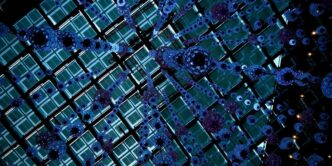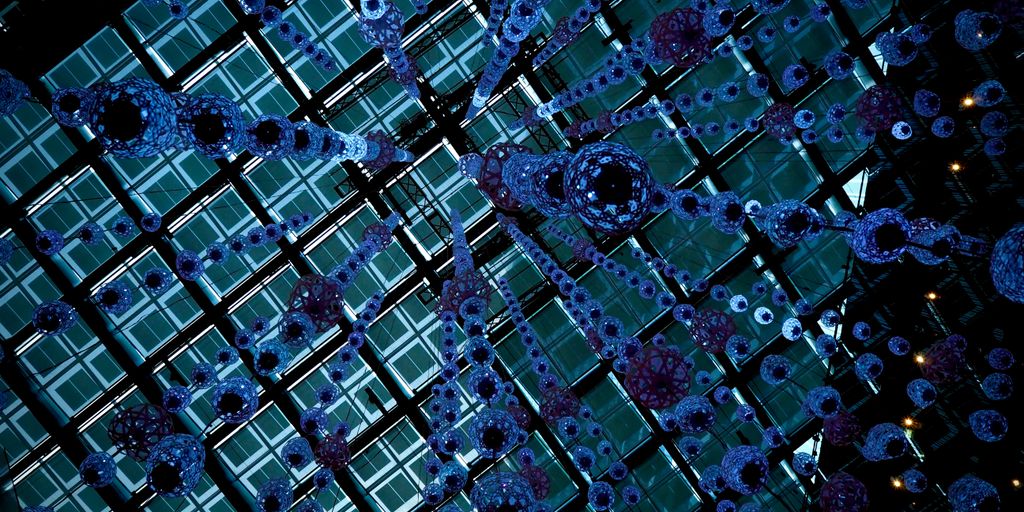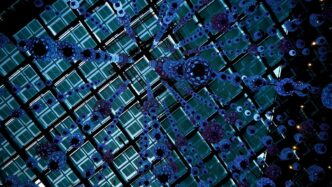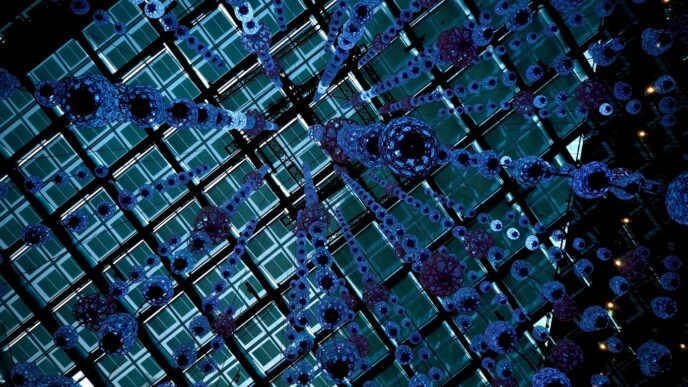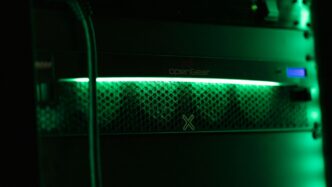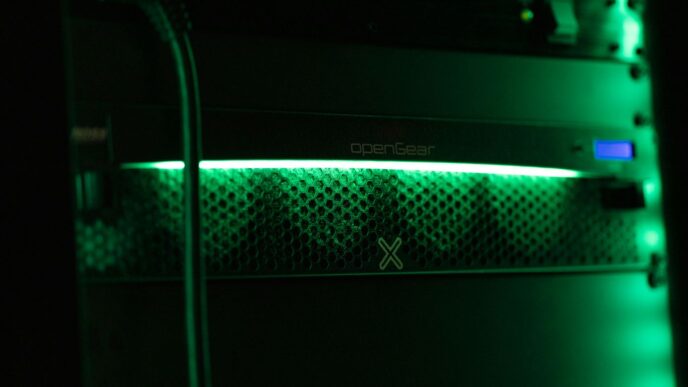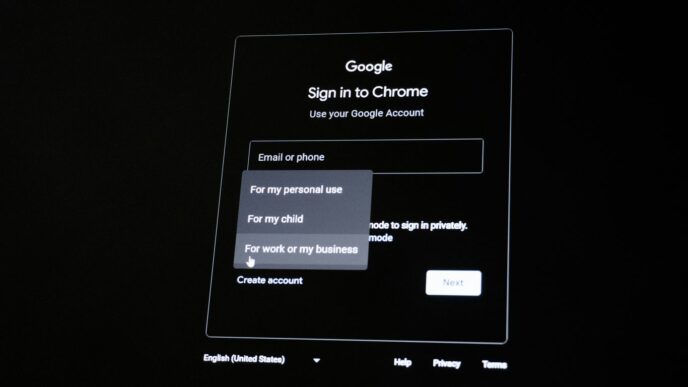So, Google’s got this new quantum chip, Willow, and people are talking. Like, really talking. It did this crazy math problem super fast, and now some folks are saying it might mean parallel universes are real. It’s a whole thing. Basically, this chip is so powerful it’s making scientists rethink a lot of stuff we thought we knew about computing and, well, reality itself. We’re going to break down what’s going on, why some people are excited about the multiverse connection, and why others are saying, ‘Hold on a minute.’
Key Takeaways
- Google’s Willow chip solved a complex problem in minutes that would take supercomputers ages, sparking debate about its implications.
- Some scientists, like Google’s Hartmut Neven, suggest Willow’s power aligns with multiverse theories, where computations happen across parallel universes.
- The chip’s speed is linked to quantum mechanics’ superposition, where bits can be both 0 and 1 at once, potentially exploring many outcomes simultaneously.
- Critics argue that while impressive, Willow’s performance on tasks like Random Circuit Sampling doesn’t directly prove the existence of other universes.
- The Willow chip represents a big step in quantum computing, with potential uses in science and tech, regardless of its connection to multiverse theories.
Google’s Willow Chip and the Multiverse Debate
So, Google’s got this new quantum chip, right? They call it Willow. And get this, it apparently solved a really tough math problem in like, five minutes. A problem that would take the best supercomputers we have today ages – like, longer than the universe has been around ages. It’s pretty wild when you think about it. This whole thing has really gotten people talking, especially about the multiverse.
Willow’s Computational Feat: A Five-Minute Solution
Let’s break down what Willow actually did. It tackled a task called Random Circuit Sampling. Think of it like this: imagine a super complex maze. A regular computer tries every single path, one by one. Willow, because it’s a quantum computer, can somehow explore a massive number of paths all at once. The result? It finished a job in five minutes that would take a top-tier supercomputer about 10 septillion years. That’s a 1 followed by 25 zeros. It’s a number so big, it’s hard to even wrap your head around. This kind of speed is what makes people wonder if something truly extraordinary is happening under the hood. It’s a huge leap from what we’ve seen before, and it’s making scientists rethink what’s possible with computation. This achievement really highlights the potential of quantum computing technology.
The Multiverse Hypothesis: A Quantum Interpretation
Now, how does this connect to parallel universes? Well, some scientists, like Hartmut Neven from Google’s Quantum AI team, think that the way quantum computers work, especially with something called superposition, might actually be proof of the multiverse. Superposition is this weird quantum thing where a particle can be in multiple states at the same time. The idea is that when a quantum computer is calculating, it’s not just doing it in our universe, but in many parallel universes simultaneously. So, Willow’s incredible speed isn’t just about faster processing; it’s seen by some as evidence that these parallel computations are actually happening. It’s a mind-bending thought, suggesting that the universe might be a lot bigger and stranger than we ever imagined.
Hartmut Neven’s Stance on Parallel Universes
Hartmut Neven, a big name in quantum computing, has been pretty vocal about this. He’s suggested that Willow’s performance really fits with the idea that quantum computers are, in a way, tapping into these parallel universes to get their work done. He sees the massive computational power as a direct result of these parallel processes. It’s not just a hunch; it’s tied to how we understand quantum mechanics. While this is a fascinating perspective, it’s important to remember that it’s one interpretation. Other scientists have different ideas about why quantum computers are so fast, and they don’t necessarily involve other universes. The debate is definitely heating up, and it’s making us ask some big questions about the nature of reality itself.
Understanding Quantum Computing’s Power
Classical Bits vs. Quantum Qubits
So, how do these quantum computers actually work their magic? It all starts with the basic unit of information. On your everyday computer, that’s a ‘bit.’ A bit is like a light switch – it’s either on or off, representing a 0 or a 1. Simple enough, right? Quantum computers, however, use something called ‘qubits.’ Now, qubits are way more interesting. Thanks to a quantum phenomenon called superposition, a qubit isn’t just a 0 or a 1. It can be a 0, a 1, or, and this is the wild part, both at the same time. Think of it like a dimmer switch instead of a regular on/off switch; it can be anywhere in between, or even in multiple states simultaneously until you actually measure it.
The Role of Superposition in Computation
This ability of qubits to exist in multiple states at once is what gives quantum computers their incredible power. When you have multiple qubits, the number of states they can represent grows exponentially. Two qubits can represent four states simultaneously, three qubits can represent eight, and so on. With just a few hundred qubits, you could theoretically represent more states than there are atoms in the observable universe! This is where the idea of parallel universes starts to creep in for some folks. If a qubit can be in multiple states at once, does that mean the computation is happening in parallel universes? It’s a mind-bending thought, and it’s a big part of why people are linking quantum computing to the multiverse debate. It’s like the computer is exploring every possible path through a maze all at once, rather than trying each path one by one like a classical computer would.
Exponential Speed-Up Through Parallel Processing
Because qubits can explore so many possibilities simultaneously, quantum computers can tackle certain problems that are completely impossible for even the most powerful supercomputers we have today. Take Google’s Willow chip, for example. It recently solved a complex benchmark problem called Random Circuit Sampling in just five minutes. A regular supercomputer would need billions of years to do the same thing. That’s not just a little faster; that’s an almost unimaginable leap in processing power. This isn’t about making your video games run smoother; it’s about solving problems in fields like medicine, materials science, and artificial intelligence that are currently out of reach. It’s like trying to send information across vast distances; new materials are being developed that could allow light pulses to travel at effectively infinite speeds, which could revolutionize how we connect microchips and networks. This exponential speed-up is the core of what makes quantum computing so revolutionary, and it’s what fuels the excitement about its potential applications.
Arguments Supporting the Multiverse Connection
Superposition as Evidence for Parallel Computations
So, how does Willow’s impressive speed connect to the idea of parallel universes? It all comes down to something called superposition. You know how regular computer bits are either a 0 or a 1? Well, quantum bits, or qubits, can be both at the same time. Think of it like a coin spinning in the air before it lands – it’s neither heads nor tails, but a mix of both possibilities. Quantum computers like Willow use this ability to explore many different answers to a problem all at once. Some folks, including Google’s own Hartmut Neven, suggest that these multiple states aren’t just mathematical tricks. They propose that each state might actually represent a computation happening in a separate, parallel universe. It’s a wild thought, but it could explain why quantum computers are so much faster for certain tasks. It’s like having an army of computers working on your problem, each in its own universe.
Deutsch’s Theory and Quantum Algorithm Efficiency
This idea isn’t entirely new, though. Back in the day, a physicist named David Deutsch had some pretty big thoughts about this. He argued that the sheer power of quantum algorithms, like the ones used for breaking codes, only makes sense if quantum computers are actually tapping into these parallel universes. It’s like trying to understand how a massive orchestra creates such rich sound – you can’t just focus on one violin; you have to consider all the instruments playing together. Deutsch’s theory suggests that quantum computers are doing something similar, but instead of different instruments, they’re using different universes. Willow’s performance seems to fit right into this picture, making Deutsch’s ideas feel a lot less like pure theory and more like something we can actually test. It’s a fascinating way to look at quantum computation.
Neven’s Assertion Linking Willow to Multiverse Interactions
Hartmut Neven, who leads Google’s Quantum AI team, has been pretty open about his belief that Willow’s success points towards the multiverse. He’s mentioned that the sheer number of calculations Willow can handle, far exceeding anything possible in our universe’s timeline, suggests that quantum computation might be happening across many parallel realities. He’s even directly linked this to David Deutsch’s earlier predictions. It’s not just about Willow crunching numbers; it’s about what those numbers mean for our understanding of reality itself. Neven’s perspective really puts a spotlight on the possibility that these quantum machines are, in some way, interacting with or utilizing these other universes. It’s a bold claim, and it’s definitely got people talking about the deeper implications of what we’re building.
Counterarguments and Skeptical Perspectives
Alternative Explanations for Quantum Phenomena
While some folks are quick to link Google’s Willow chip and its impressive capabilities to the idea of parallel universes, it’s worth remembering that science often has more down-to-earth explanations. Not every weird quantum effect necessarily means another universe is popping into existence. Think about superposition, for instance. It’s often described as a qubit being in multiple states at once, which sounds a lot like it’s exploring different realities. But really, it’s just a mathematical description of probabilities before a measurement is made. It doesn’t automatically mean there are countless versions of us making different choices out there. We’re still figuring out the best way to describe what’s actually happening at that tiny scale, and maybe it’s not as dramatic as a multiverse split.
The Speculative Nature of Multiverse Linkages
Let’s be honest, the whole multiverse idea is pretty out there. It’s fascinating to think about, sure, but it’s also highly speculative. Hartmut Neven’s ideas about consciousness and parallel universes are certainly thought-provoking, but they’re a long way from being proven facts. It’s like trying to explain a strange noise in your car by saying it’s a ghost; it’s a possibility, but a mechanic would probably look for a loose bolt first. The connection between quantum computing and the multiverse is currently more philosophical than empirical. We don’t have any direct evidence that Willow’s computations are actually interacting with other universes. It’s a cool concept, but we need more than just intriguing theories to make that leap. It’s important to keep our feet on the ground while our heads are in the clouds, so to speak. For more on the philosophical side of things, you might find discussions on quantum indeterminacy interesting.
Random Circuit Sampling: A Benchmark, Not Proof
When Google announced Willow’s achievements, a lot of the talk was about random circuit sampling. This is a specific task designed to show off a quantum computer’s power by having it perform a complex calculation that’s incredibly difficult for even the best classical computers. While Willow’s success in this area is a huge technical achievement, it’s essentially a benchmark. It proves the machine can do something very hard, but it doesn’t automatically validate the multiverse hypothesis. Think of it like a race car setting a new speed record; it shows the car is incredibly fast, but it doesn’t prove that the car can fly. We need to be careful not to confuse a demonstration of computational power with proof of a complex cosmological theory. It’s a step forward for quantum computing, but not necessarily a step into another dimension.
Willow’s Impact Beyond the Multiverse
While the idea of Google’s Willow chip unlocking secrets of parallel universes is pretty wild, it’s important to remember that this chip is also a massive step forward for quantum computing in more down-to-earth ways. Think about it: the progress we’re seeing with Willow isn’t just about theoretical physics; it’s about practical advancements that could change a lot of things.
Advancements in Quantum Error Correction
One of the biggest hurdles in quantum computing has always been errors. Qubits are super sensitive, and even the slightest disturbance can mess up a calculation. Willow, however, has shown some really promising results in quantum error correction. This means the calculations it performs are more reliable, which is a huge deal for making quantum computers actually useful for complex tasks. It’s like building a skyscraper – you need a solid foundation, and error correction is that foundation for quantum computing.
Potential Applications in Science and Technology
Beyond the multiverse chatter, Willow’s capabilities point to some serious real-world applications. Imagine speeding up the discovery of new medicines by simulating molecular interactions with incredible accuracy. Or perhaps designing new materials with properties we can only dream of today. Even in fields like finance and logistics, optimizing complex systems could become vastly more efficient. The ability to tackle problems that are currently intractable for even the most powerful supercomputers opens up a whole new frontier for scientific research and technological innovation. We’re talking about solving problems that could genuinely benefit humanity.
The Accelerating Pace of Quantum Innovation
It’s not just Willow itself, but what it represents: the sheer speed at which quantum computing is advancing. What was science fiction just a few years ago is now becoming a reality. This rapid progress means we’re likely to see even more breakthroughs in the near future. It’s exciting to think about what the next generation of quantum chips will be capable of, and how they’ll continue to push the boundaries of what’s possible. This whole field is moving so fast, it’s hard to keep up, but that’s part of the thrill. You can even start learning about some of these concepts yourself through resources like Google’s quantum course.
The Future of Quantum Computing and Reality
So, what’s next for quantum computing and, you know, reality itself? It’s a big question, and honestly, nobody has all the answers yet. But with machines like Google’s Willow chip, we’re getting closer to figuring out some really mind-bending stuff. Think about it: could we actually build ways to interact with other universes? It sounds like science fiction, but the way quantum computers work, with all their possibilities happening at once, makes you wonder. It’s like they’re already exploring different paths, and maybe, just maybe, we can learn to tap into that.
It’s not just about theoretical possibilities, either. The tech is moving fast. Google plans to build more of these quantum computers, stacking them up to get even more power. They’re aiming for real-world uses by the end of this decade. That’s not that far away! Other big companies are in the race too, so things are really heating up in this field. It makes you wonder what kind of world we’ll be living in even ten years from now.
The sheer computational power we’re talking about could fundamentally change how we understand our place in the cosmos. It’s a lot to take in, but it’s also incredibly exciting. We’re on the edge of something huge, and it’s going to be fascinating to see where it all leads.
So, What Does It All Mean?
Look, the Willow chip from Google is pretty wild. It did this crazy math problem super fast, and some folks are saying that means parallel universes are real. Others say, ‘Hold on a sec, that’s a big leap.’ It’s like finding a really cool new gadget and then arguing about whether it proves aliens exist. Right now, we don’t have solid proof for the multiverse, even with Willow’s impressive work. But it’s definitely got people talking and thinking about what’s possible. Whether it’s a window into other realities or just really, really good computing, it’s clear that quantum tech is moving fast. We’ll just have to wait and see what happens next, I guess.
Frequently Asked Questions
What is Google’s Willow chip and why is it causing a stir?
Google’s Willow chip is a new type of computer that uses quantum mechanics. It’s super fast at solving certain really hard problems. One problem that would take normal computers ages took Willow only about five minutes! This amazing speed has led some scientists to wonder if it’s somehow connected to the idea of parallel universes.
How is a quantum computer like Willow different from a regular computer?
Classical computers use bits, which are like light switches that are either on (1) or off (0). Quantum computers use ‘qubits.’ Thanks to a cool trick called superposition, qubits can be both on and off at the same time, or somewhere in between! This lets them explore many possibilities all at once, making them incredibly powerful for certain tasks.
What’s the big idea about Willow and parallel universes?
Some scientists, like Hartmut Neven from Google, think that the way quantum computers work, especially their incredible speed, might be because they are somehow using or interacting with other universes. It’s like they can do many calculations at the same time by splitting the work across different realities.
Are there other explanations for Willow’s power besides parallel universes?
Not everyone agrees! Some scientists believe that the amazing speed of quantum computers can be explained by the science of quantum mechanics itself, without needing to imagine other universes. They say that while Willow is impressive, it doesn’t directly prove that parallel universes exist. It’s more like a really, really good calculator.
What are the other important things Willow might help us do?
Even if Willow doesn’t prove the multiverse, it’s still a huge deal! It shows how much quantum computing has improved, especially in fixing errors. This could lead to amazing new things in science, like discovering new medicines, creating new materials, or making super-secure communication.
Could quantum computers like Willow help us explore other universes in the future?
It’s still very early days, but the idea is that quantum computers might one day help us understand if other universes exist or even find ways to interact with them. It makes us think about reality and our place in the universe in totally new ways. It’s a big question that scientists will keep exploring.

